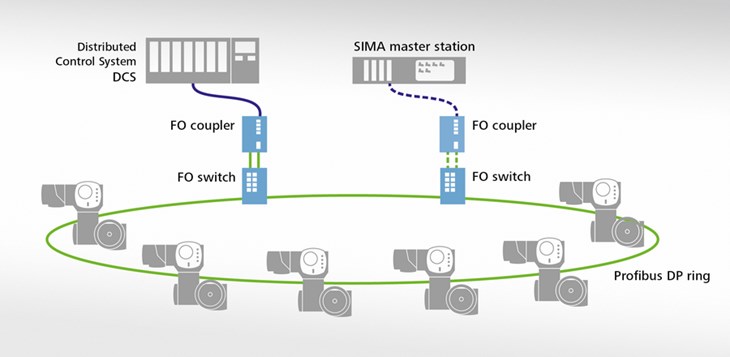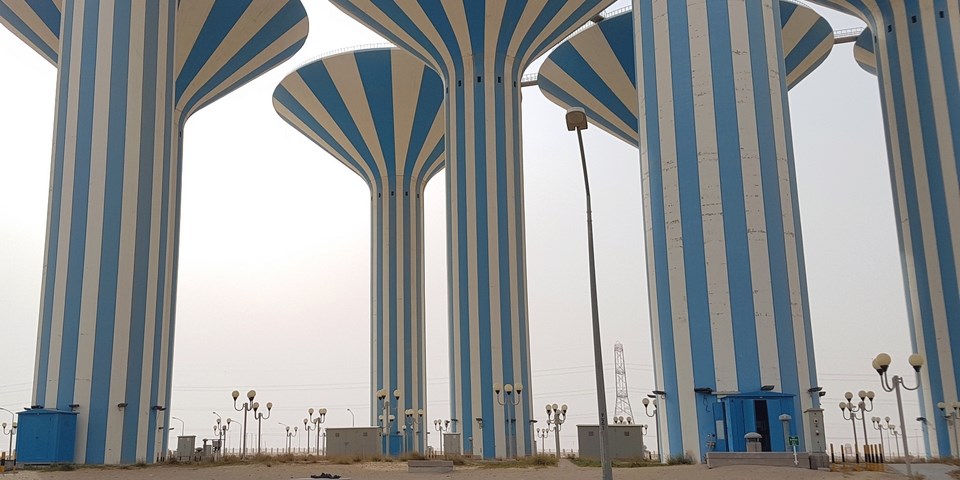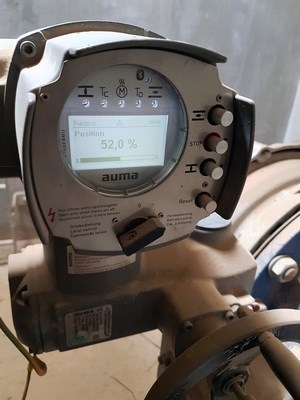Header image: The giant water towers create a striking landmark in the flat landscape of Sabah Al Ahmad Sea City in southern Kuwait.
Article by Heike Schmeding, AUMA
___
Sabah Al Ahmad Sea City is a new settlement being built in the south of Kuwait, close to the border with Saudi Arabia. Constructed on what was formerly a salt marsh, the project features a network of tidal gates and inlets that bring the waters of the Persian Gulf 9 km inland. Fresh water from desalination plants arrives in the city via pipeline. To provide drinking water for a projected 250,000 residents, the water is then stored in 17 water towers before being distributed to customers. The giant water towers create a striking landmark in the flat landscape of Sabah Al Ahmad Sea City.
Kuwait’s Ministry of Electricity and Water (MEW) was looking for a solution that provides utmost reliability in the water supply. As a result, they decided to install electric actuators from AUMA in combination with SIMA master stations. AUMA had supplied more than 1,000 actuators to MEW for various water projects over the last five years.
SIMA master stations provide redundancy
SIMA master stations are generally used to create autonomous networks of actuators, simplifying commissioning and diagnostics, and reducing the links to plant-level control systems. In this specific project, they are used as a back-up control system for the plant’s DCS. In normal operation, the actuators are directly controlled by the DCS in the plant’s control room. If there is a failure of the DCS, however, a fibre optic switch allows the SIMA master stations to take over control of the actuators, thus ensuring an uninterrupted drinking water supply to the inhabitants of Sabah Al Ahmad Sea City.
Optical fibre ring networks
The actuator controls communicate using the Profibus DP protocol running over four optical fibre rings. Each ring also connects to the DCS and one of the SIMA master stations via a pair of special fibre optic switches. Either the DCS or the SIMA master station is active at any one time; without a control signal (or in the event of a power failure) the switch linked to the other control device simply provides a straight-through path for the optical signal. This arrangement is a simple and reliable way to swap control duties between the DCS and the SIMA master stations.
Neither the actuators nor the DCS Profibus interface need to be modified, and the extra equipment is limited to just the two fibre optic switches and their power supplies.
Optical fibre cables provide enhanced data transmission security especially over long distances, thanks to their very low attenuation of light. Installation proved to be hassle-free, since the fibre optic module that converts actuator-internal electrical signals into optical signals is integrated directly within the actuator controls. The availability of the Profibus DP ring is monitored continuously, and any interruptions on the optical fibres are signaled immediately, thus further enhancing communication security.
Each pair of SIMA master stations has a cabinet designed and built specifically for this project. AUMA also supplied the optical fibre hardware (fibre optic interfaces, splice boxes, optical bypasses, switches, patch cables, and Profibus couplers).
Commissioning provided a good workout for AUMA’s service engineers, reports Joel Lusing of AUMA Middle East. Most of the actuators are installed either in underground chambers or on top of the water towers. During the physical part of the commissioning process, the service engineers needed to climb down into each of the chambers and climb up each of the towers.




